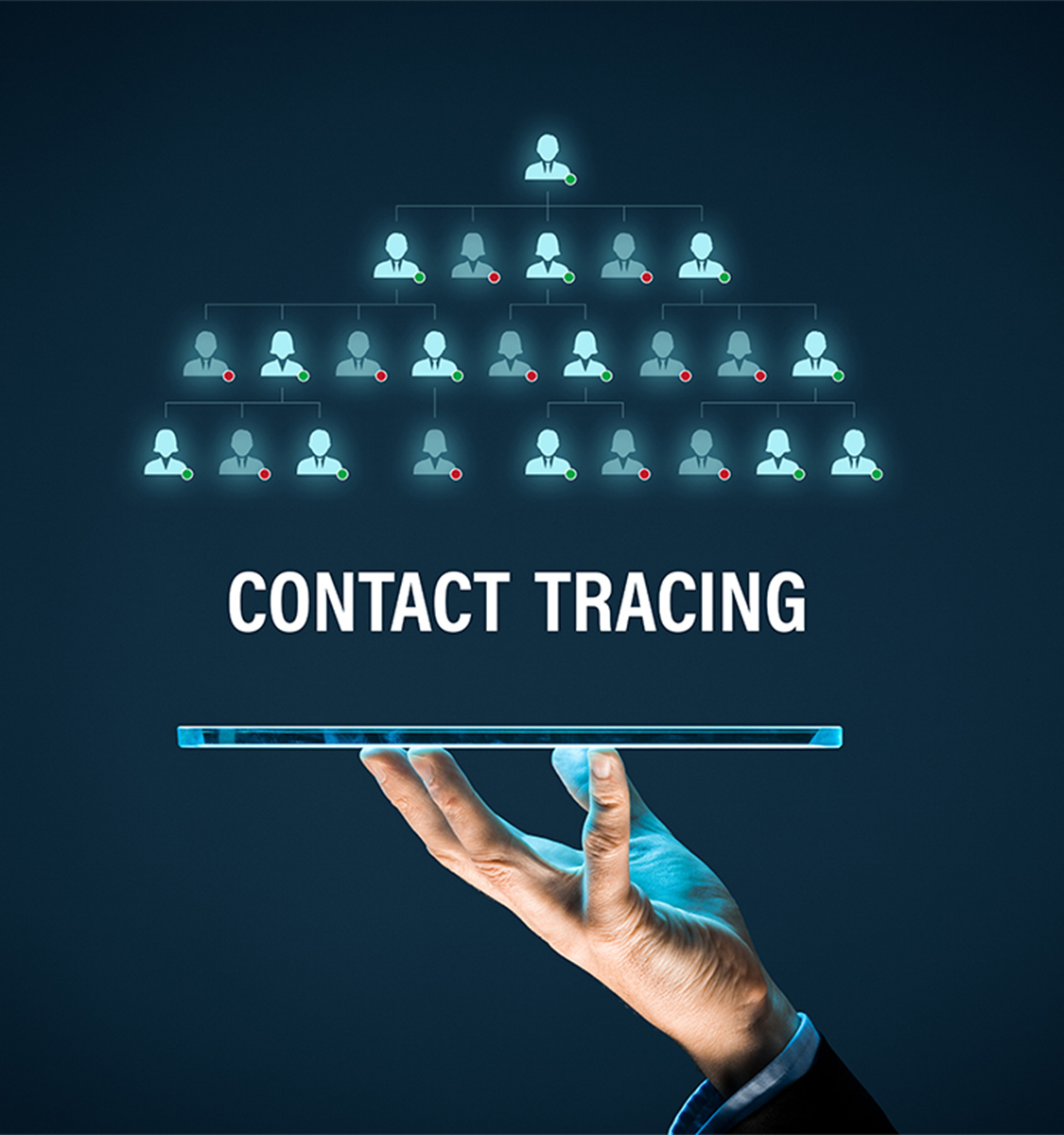Major industries, such as manufacturing and health, had to make drastic adjustments in response to the COVID-19 pandemic. For many, it meant implementing contact tracing protocols per CDC guidelines. Along with the help of IoT devices, companies are adapting their business processes and transitioning to new ways of operating to survive in the new normal.

To meet new challenges in the wake of the coronavirus health crisis, the industrial internet of things (IIoT) can ensure employees are keeping safe distances from each other and from important assets. Wearable trackers and sensors ensure all contacts are logged and social distancing is maintained. However, these IIoT tools depend on a reliable battery life and powerful microprocessor units (MCU). Thanks to the development of new IIoT solutions, companies can better navigate COVID-19 challenges and beyond.
IoT Contact Tracing

Many of today’s track and trace solutions involve IoT edge devices which are wireless tags with a radio and a variety of sensors. The sensors collect data, and the radio periodically sends summary data to cloud-based applications.
Until recently, a reliable battery power source was a significant challenge in portable use cases. Devices that require near constant wireless connection usually drain the portable battery quickly, especially if their sensors need to be always on to function as intended. Battery replacement becomes impractical as well, given the sheer number of individual IoT edge devices, and the cost of deploying technicians.
However, by using Ambiq MCUs, it is now practical to make a contact tracing tag, that is both low cost and requires very infrequent maintenance for recharging or battery replacement. With such low power consumption, Ambiq MCUs are ideally suited for COVID-19 contact tracing in low power wireless IIoT applications.
New Products for Contact Tracing
There are two main scenarios where a tag with a long battery life can enable a new type of product to perform COVID-19 contact tracing:
Shipment-Attached Tags
In this scenario, tags are attached to pallets, products, and containers before the shipment leaves the starting point. The tags travel with the shipment until it arrives at the destination. During transit, the tags continuously track its latitude and longitude, temperature, and other sensor data. Onboard radios can detect and track which other radio transmitters are nearby, such as personal cellphones and smartwatches. Tags with a microphone can listen, process audio to detect human presence, and note when and for how long it was near several people at the same time, thus showing a possible COVID-19 contact.

When shipments, containers, and assets can be tracked and monitored in real time, companies can guarantee up-to-date supply chain visibility. Beyond the benefits of knowing who may have interacted with a shipment, real-time feedback not only ensures the right parts are delivered to the right place on time, but can also and provide alerts on valuable cargo from being tampered or stolen. With a longer battery life than previously possible, the role of IoT in inventory management will increase even more. Companies can track items and obtain data from any point in their supply chain, which will reduce any unwanted human contact.
Wireless Sensor Tags
Another example of an IIoT system for contact tracing would be to deploy battery-powered wireless sensor tags into a school, hospital campus, or to a set of multi-room company buildings. In such an industrial environment, continuous power might not be available in all noteworthy areas, or it might be very costly to add. Ambiq MCUs, with their unprecedented low power consumption, can be used as the main processor inside wireless tags deployed into each room where humans might go.
Wireless tags are easily installed and doesn’t need frequent maintenance with years of tag battery life. These tags can record the presence of human audio, as well as which personnel badges, cellphones, smartwatches, or other IoT-enabled devices that were nearby. The time of contact and the duration is also captured. With such low power and high processing capability, tags which last for years can be built to detect human presence and send that small information to a cloud-based application.
Sending all the audio detected by the sensor is too costly in terms of power consumption. To ensure a long battery life, the tag will instead listen to the audio, determine if people may be present, and send that snippet to the cloud. Tags could also record other sensor information and make note of alarms, motion, and other physical characteristics. The high processing capabilities and low power draw of Ambiq MCUs makes this type of tag design practical for IIoT applications.
Navigate COVID-19 Challenges with Ambiq
The use of IoT technology to track and monitor edge devices will continue beyond the COVID-19 pandemic. Contact tracing tags can provide real-time information about where assets have been, and who they have been in contact with. However, these IIoT applications are only possible with Ambiq MCUs intelligent power management and field-proven processing capabilities.
Recently, Ambiq won the “IoT Semiconductor Company of the Year” Award in the 2021 IoT Breakthrough Awards Program. Built on our patented Subthreshold Power Optimized Technology (SPOT®) platform, Ambiq’s products reduce the total system power consumption on the order of nanoamps for all battery-powered edge devices.
Simply put, our solutions harness IoT to minimize risk during COVID-19 and beyond.


